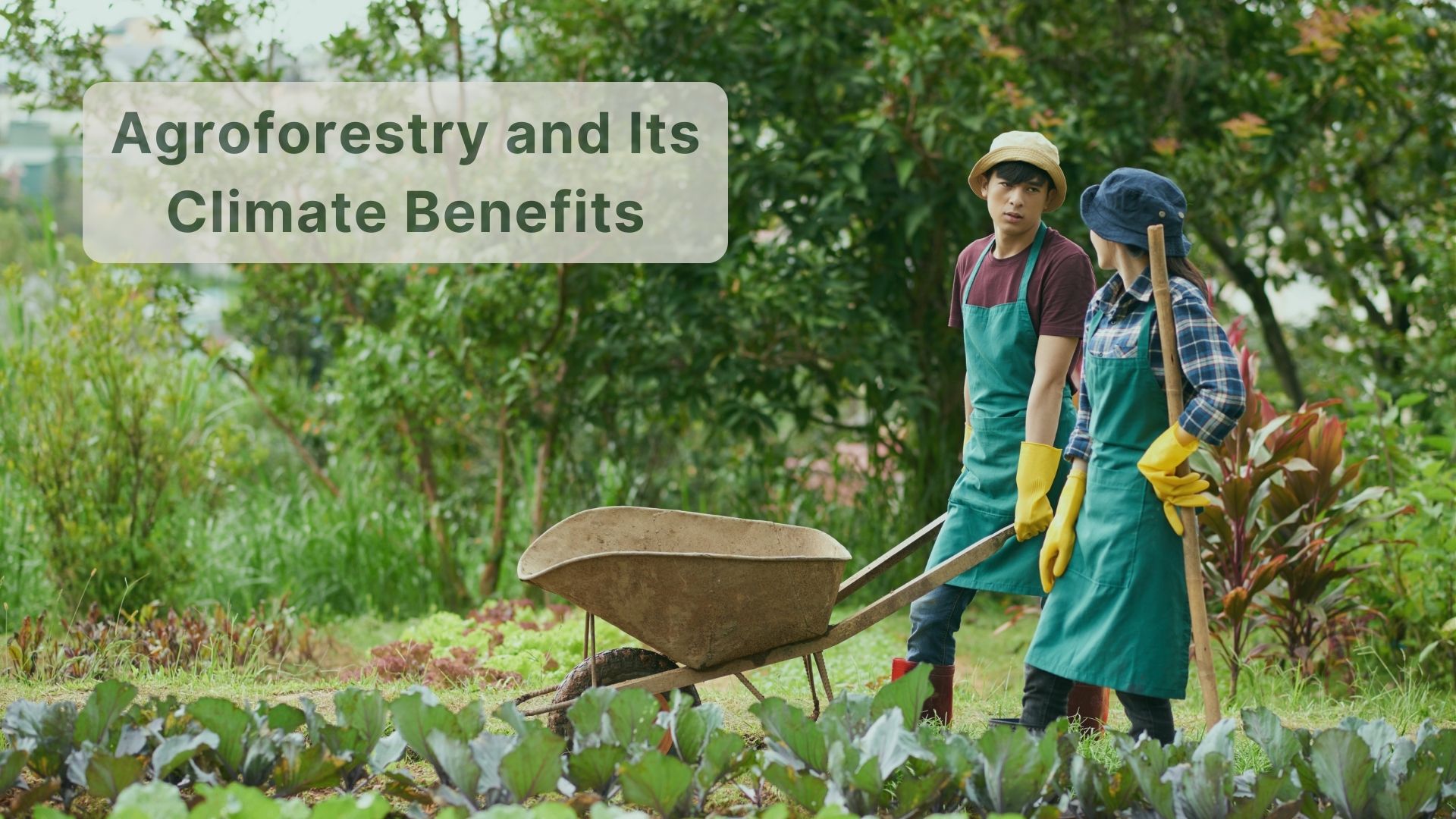Get to Know: Agroforestry
Science

Agroforestry is a practice combining agriculture and forestry to boost productivity and sustainability. It involves growing trees and shrubs together with crops and/or livestock. There are 5 common practices of agroforestry [1]:
- Alley cropping: Planting of rows of trees and/or shrubs to create wide alleys in which agricultural or horticultural crops are produced. The trees or shrubs can be either hardwood, softwood, fruit, nut, or other specialties. An example of alley cropping system is cotton grown between rows of pine trees [2].
- Forest farming: Cultivation of high-value crops under a managed tree canopy. These woodland crops are called Non-Timber Forest Products (NTFPs); they can be ginseng, goldenseal, mushrooms, or decorative ferns. Although forest farming systems may look like ordinary forest lands, they still need management activities such as site preparation, harvesting and scattering local seeds, thinning out competing plants, constructing planting beds, pest control, applying soil amendments to optimize pH or fertility, and fencing to deter animals or poachers [3].
- Riparian forest buffers: Planting a combination of trees, shrubs, and/or perennial plants in an area adjacent to a stream, lake, or wetland. This area is managed differently from the surrounding area to boost conservation and water quality [4].
- Silvopasture: Integration of tree planting and livestock grazing, done by introducing forage grass into tree plantation or introducing trees into a pasture. Silvopasture typically involves fertilization, nitrogen-fixing legumes, and short grazing periods to maximize plant growth. Silvopasture can reduce animals’ heat stress and provide income streams from livestock while waiting for trees to mature [5].
- Windbreaks: Linear planting of trees and shrubs primarily designed to slow the wind down. Windbreaks help to protect wind-sensitive crops, reduce wind erosion, reduce noise and odor from livestock, distribute snow more evenly during winter, and increase the efficiency of pollination, irrigation, and pesticide effectiveness [6].
Climate Benefits of Agroforestry
In addition to its benefits for farming productivity, diversification of income, and conservation, agroforestry is an under-leveraged pathway of climate change. It offers increased carbon sequestration without compromising food security, fiber production, and biodiversity. Research showed that agroforestry has a global climate mitigation potential of 0.12-0.31 petagram of carbon per year, comparable to reforestation (0.27 Pg C/year) [7]. In many regions, especially Global North countries, forests have been cleared to open land for agriculture. Agroforestry can be a more feasible way to restore forests in these regions compared to large-scale reforestation projects [8].
Agroforestry promotes water retention and nutrient cycling in soils, promoting soil fertility. This would potentially lead to decreased fertilizer use and therefore reduced emission from fertilizers. Trees in silvopasture systems capture methane generated from livestock digestion. Plus, they also provide better microclimate that minimizes stress in cattle; this may increase their feed efficiency, which results in lower methane emission from enteric fermentation [9].
Want to expand your knowledge on decarbonization and carbon market topics? Don’t miss our weekly articles on Insights page and follow our LinkedIn to stay updated 🌳
References:
[1] U.S. Department of Agriculture. (n.d.). Agroforestry Practices. Forest Service USDA. https://www.fs.usda.gov/nac/practices/index.shtml
[2] U.S. Department of Agriculture. (n.d.). Alley Cropping. Forest Service USDA. https://www.fs.usda.gov/nac/practices/alley-cropping.php
[3] U.S. Department of Agriculture. (n.d.). Forest Farming. Forest Service USDA. https://www.fs.usda.gov/nac/practices/forest-farming.php
[4] U.S. Department of Agriculture. (n.d.). Riparian Forest Buffers. Forest Service USDA. https://www.fs.usda.gov/nac/practices/riparian-forest-buffers.php
[5] U.S. Department of Agriculture. (n.d.). Silvopasture. Forest Service USDA. https://www.fs.usda.gov/nac/practices/silvopasture.php
[6] U.S. Department of Agriculture. (n.d.). Windbreaks. Forest Service USDA. https://www.fs.usda.gov/nac/practices/windbreaks.php
[7] Hart, D. E. T., Yeo, S., Almaraz, M., Beillouin, D., Cardinael, R., Garcia, E., Kay, S., Lovell, S. T., Rosenstock, T. S., Sprenkle-Hyppolite, S., Stolle, F., Suber, M., Thapa, B., Wood, S., & Cook‐Patton, S. C. (2023). Priority science can accelerate agroforestry as a natural climate solution. Nature Climate Change, 13, 1179–1190. https://doi.org/10.1038/s41558-023-01810-5
[8] Arlington. (2023). Farming with Trees: New Study Highlights the Potential of Agroforestry to Fight Climate Change. The Nature Conservancy. https://www.nature.org/en-us/newsroom/agroforestry-review-nature-climate-change/
[9] U.S. Department of Agriculture. (n.d.-d). How can agroforestry support climate change mitigation in the Northeast? USDA. https://www.climatehubs.usda.gov/hubs/northeast/topic/how-can-agroforestry-support-climate-change-mitigation-northeast

